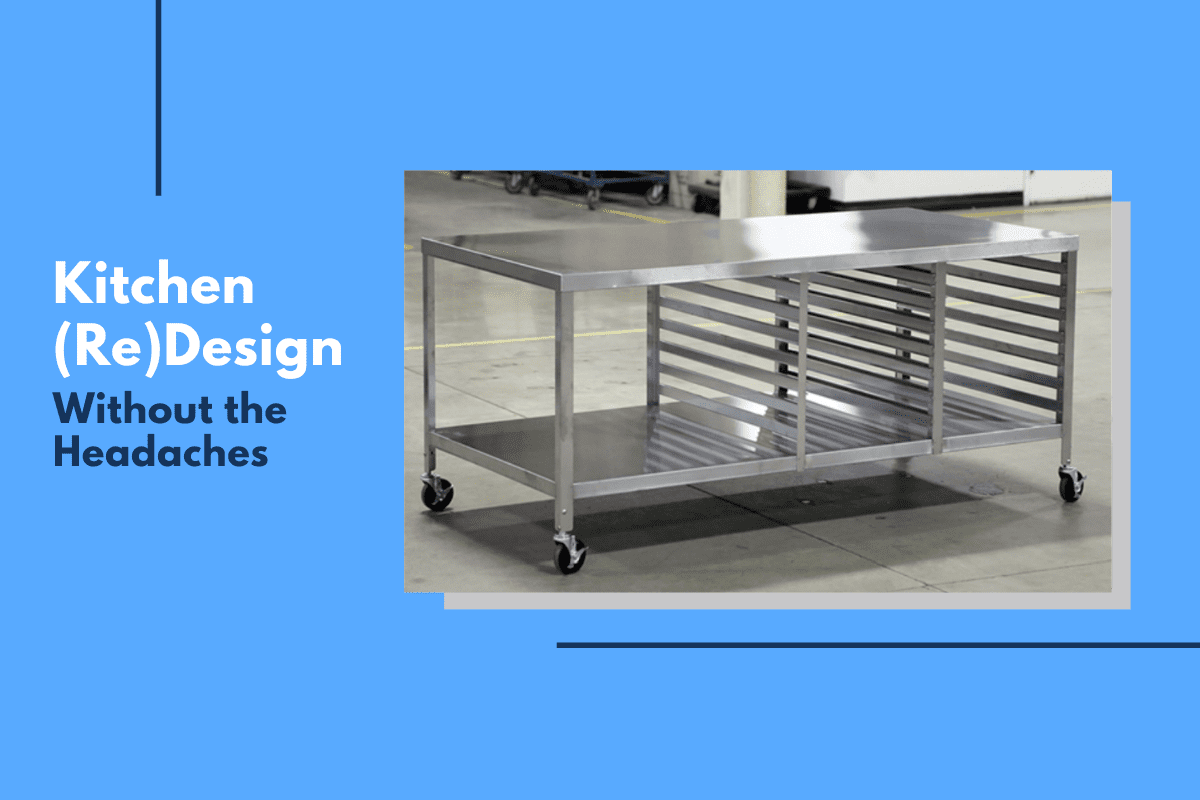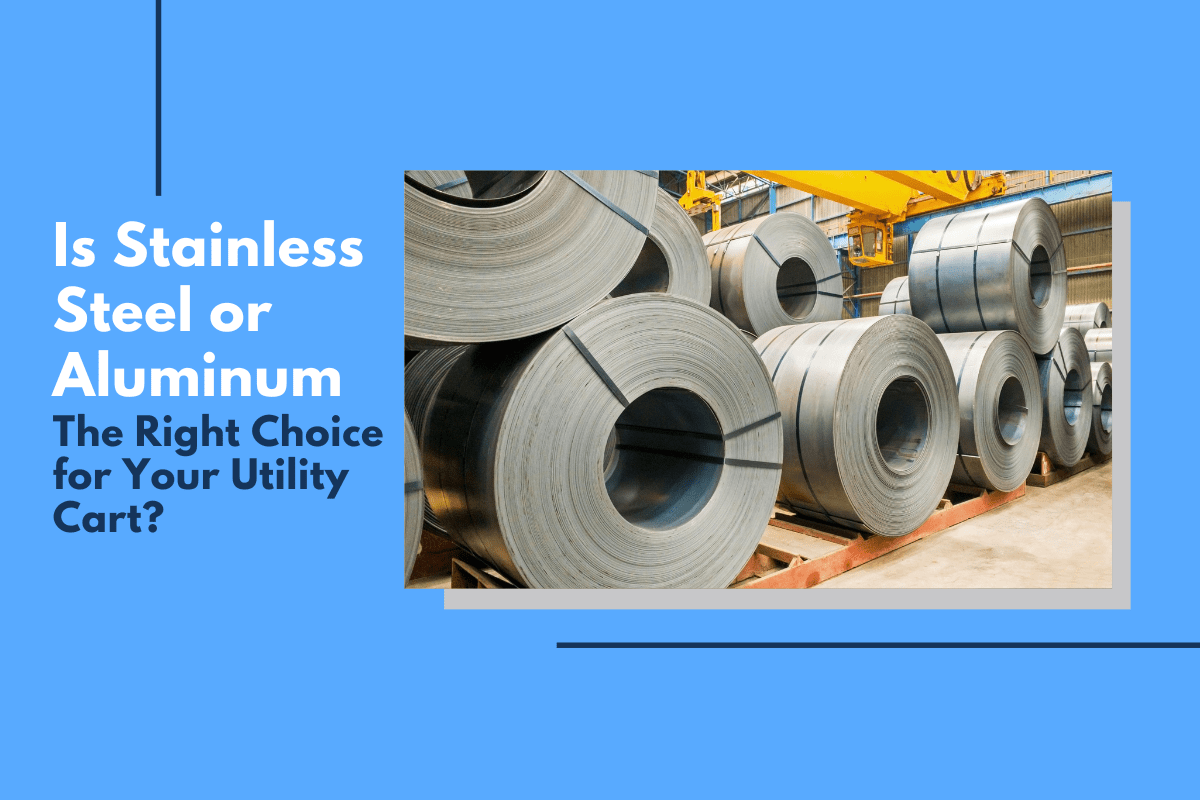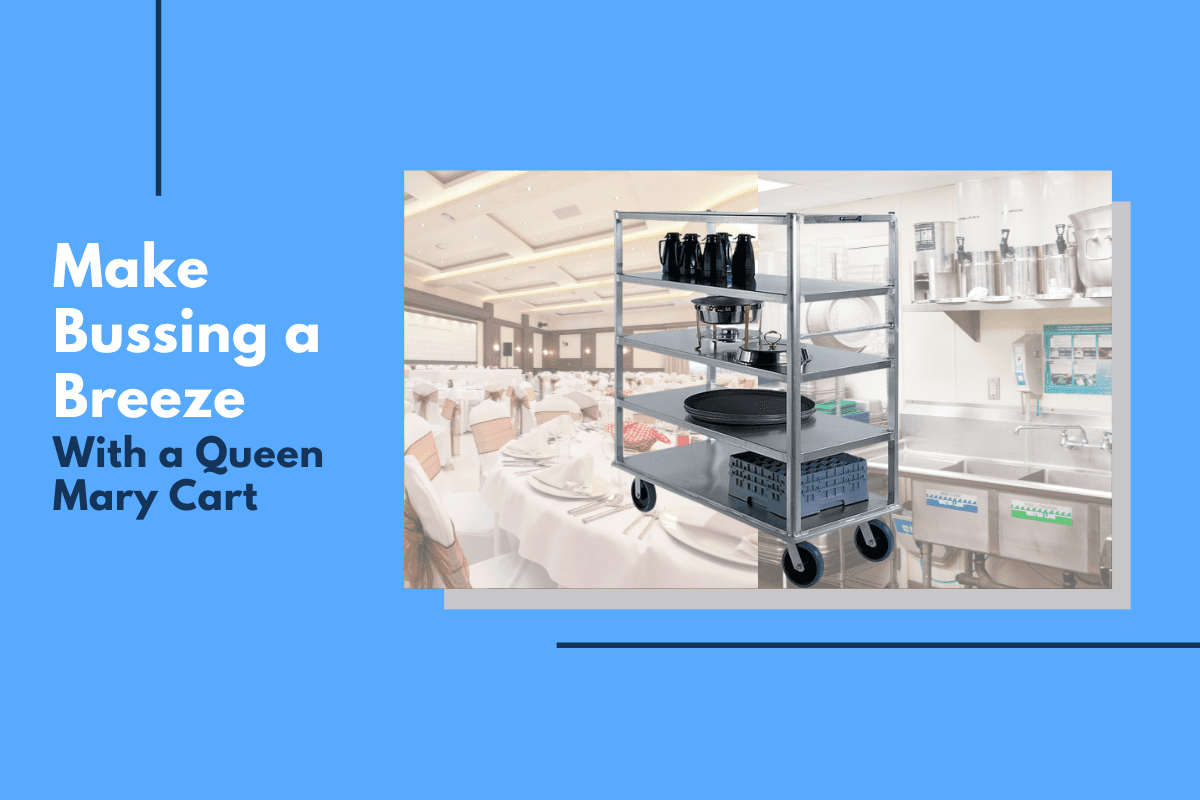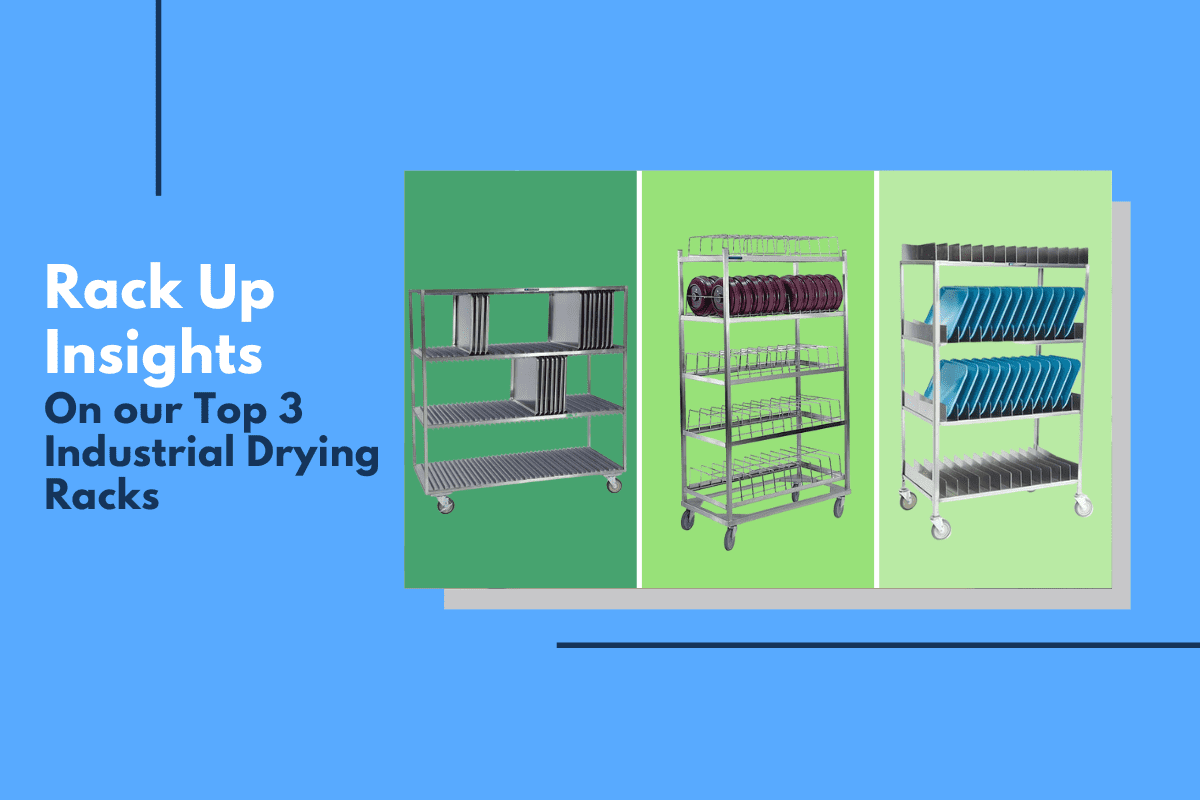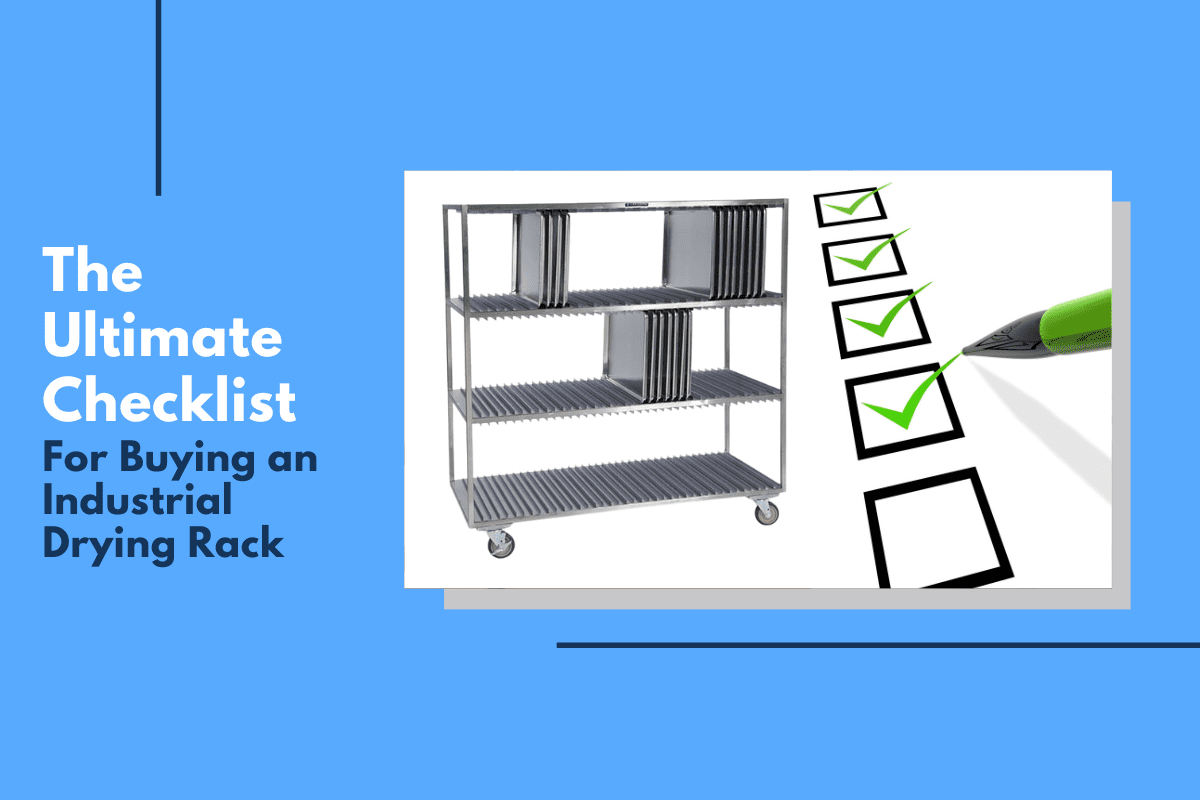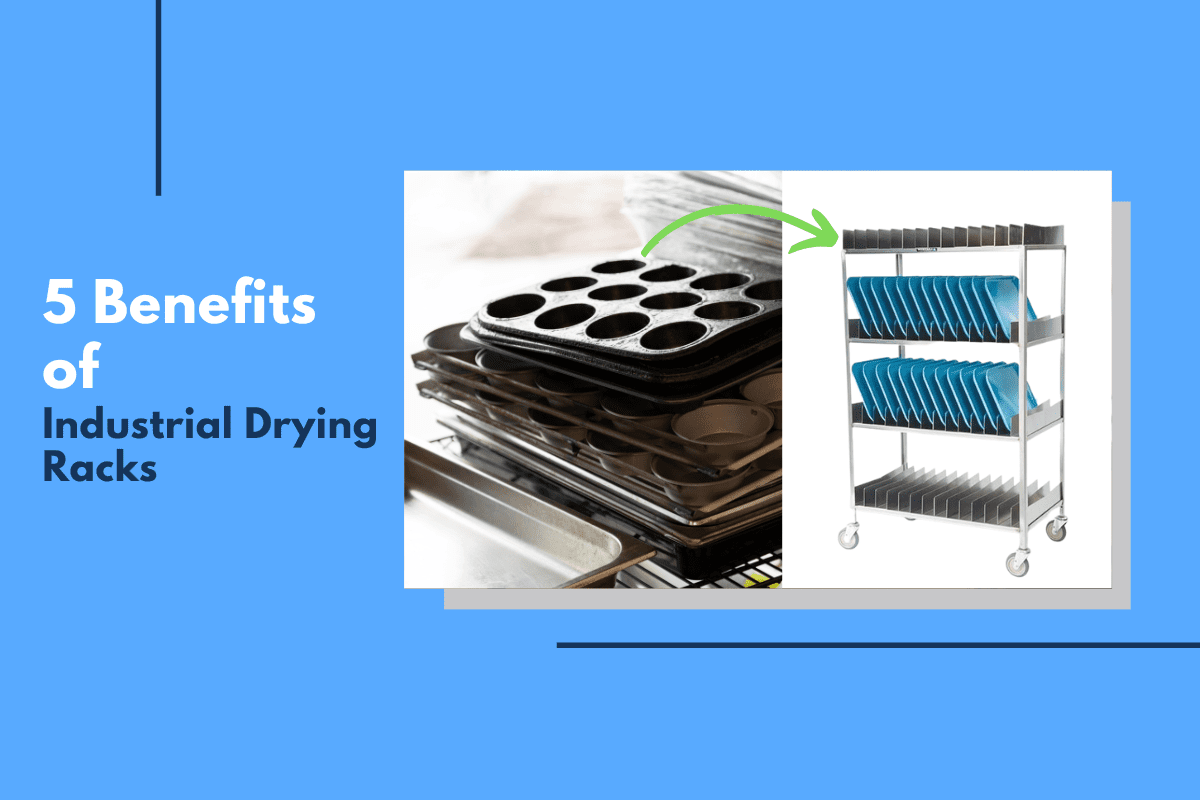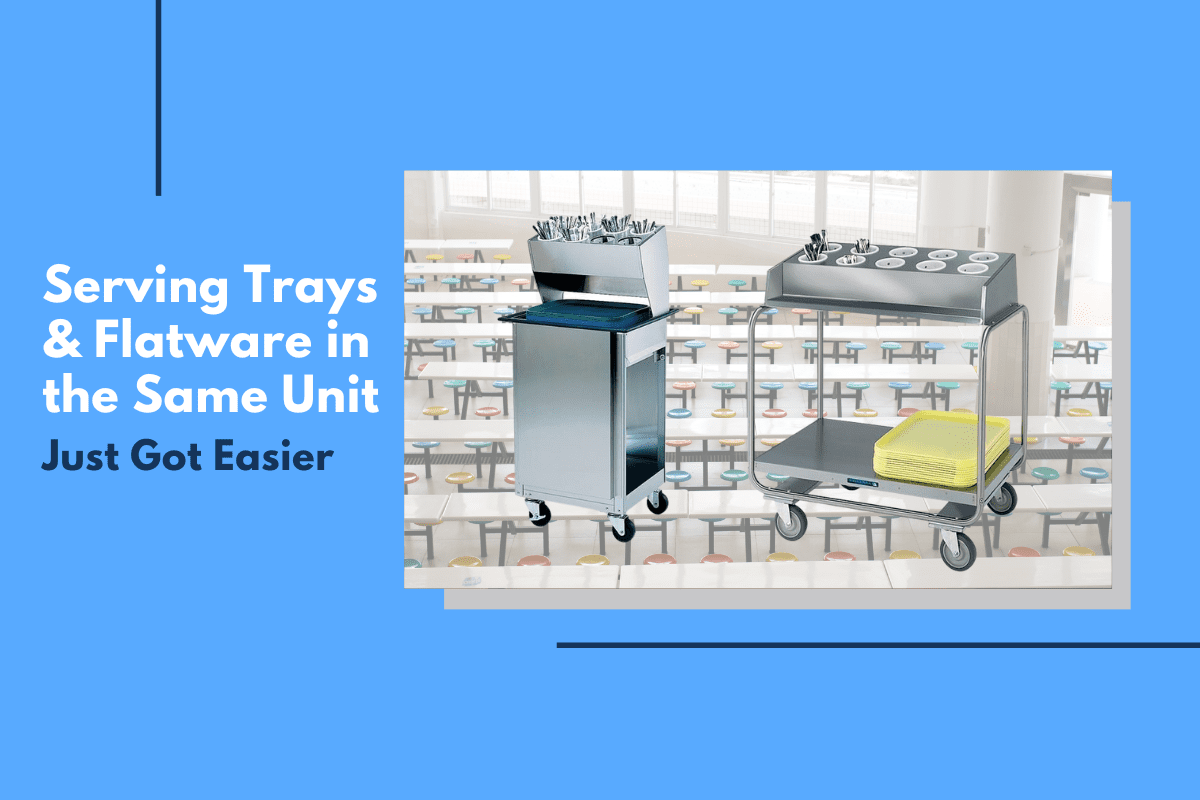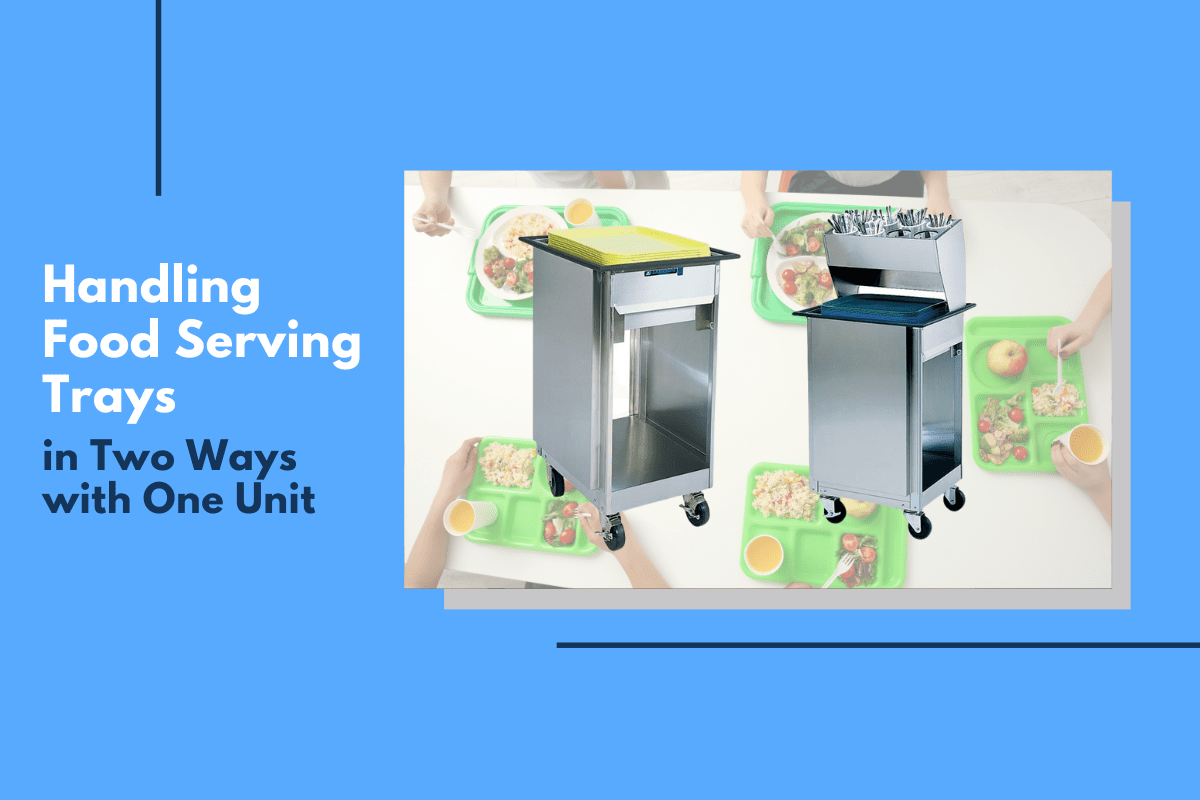Having functional storage within foodservice operations is crucial for ensuring everything runs smoothly before, during, and after service. Having multifunctional equipment is the cherry on top of functional storage. Being able to use one piece of equipment for two or more uses not only helps increase your ROI, but it also frees up space in the back of the house to allow for staff to shuffle around easily and place priority on dinners. At Lakeside, multifunctional equipment is the name of our game. When durability meets multifunction, you will see increased efficiency in foodservice operations.
A piece of equipment that is known to take up lots of space are storage shelves. While they are necessary, sometimes it would be ideal to have that space open. When you combine two functions into one, your piece of equipment is using the space of one item while serving two purposes. Another item that is notorious for crowding a kitchen are drying racks. Both of these pieces of equipment are vital to the functionality of foodservice operations, but what if they were combined into one piece of equipment?
That is exactly the functionality that our industrial drying racks offer. Having a place to dry dishes and not needing them to be transferred onto the storage shelves saves time. Instead, simply roll the drying rack into a storage space to continue drying while already being stored. Labor savings is beneficial to nearly any facility, whether that is in foodservice or not. Using multifunctional equipment saves the time it takes staff to perform the same tasks. So what should you be looking for in a multifunctional drying rack? Let’s take a look at the checklist below.
1. Stainless Steel Construction
For a piece of equipment that will see many splashes of water throughout its lifespan, making sure it is durable, while also being rust resistant, is crucial. While plastic drying racks can get the job done, they usually are not able to withstand the same amount of weight that stainless steel can. The higher weight capacity stainless steel is able to hold allows for more items to be dried and stored on a single rack. Pairing its ability to hold the weight of many dishes with its resistance to rust will be sure to offer you the ideal drying rack.

2. Stability of Structure
While plastic trays may not weigh down on a rack much, metal sheet pans can add a large amount of weight onto a drying rack which is why stability is so important. Making sure your drying rack will remain stable while not in motion and also during transport is crucial to the safety of everyone. Not only does a stable drying rack ensure staff safety, it also helps avoid accidents and spills. Lakeside uses “L” supports and an all welded stainless steel base to ensure superior strength and balance while in motion and parked.

3. Mobility
Being able to move an industrial drying rack is a must. When loading a rack, it needs to be next the the dish washing area. When the rack is full, it needs to be moved out of the working area and into storage. In order to be able to do this, a drying rack must have wheels. While stationary drying racks still offer the drying space you need, they take up valuable space in the kitchen. Having mobile industrial drying racks allows your drying rack to also serve as storage and be moved out of the way.
4. Easy Cleaning
These drying racks will be used heavily since foodservice operations are constantly using, washing, and drying dishes. With this, drying racks need to be cleaned to ensure clean dishes remain clean. Having a drying rack that has removable cradles or removable rack slants makes the cleaning process easier while ensuring every aspect of the rack is able to be cleaned efficiency and thoroughly.

5. Drainage System
Water will come into contact with the rack and there will be remaining water on dishes after they come out of the dishwasher. While rinse aids help decrease the amount of time it takes for dishes to dry, water still remains on the dishes for a period of time after they have went through their dishwasher cycle and taken out. Having a drainage system on drying racks helps to direct this water during the drying process. Drying racks that have perorated bottoms where the dishes sit or perforated drain holes on shelves help reduce drying time will also ensuring there is no water build-up.
6. Versatility in Storage Abilities
Having a drying rack that can hold various sized items is an important factor to consider when purchasing an industrial drying rack. Unless you are planning to use the rack for only one tray model that you only have one size of, it most likely will be beneficial for you to have a drying rack that can hold various types of items. One meal your service might require a plethora of domes to be used to keep food warm, while the next meal might rely heavily on the use of lots of sheet pans to cook the meal. Drying racks that can hold items of varying size work best.
7. Bumpers
When transporting drying racks, you are bound to bump a corner or two. Having bumpers on the legs, bottom corners and perimeter help to reduce the impact the bumps have on furnishings. Bumpers offer an excellent safeguard for doors, walls, and furnishings.

8. Braking Casters
For when your drying rack is serving its function of being used for storage, ensuring it will remain in place is very important. One of the reasons being the security of the dishes and the second being the safety of those who walk near the drying rack. An accidental bump to the rack could cause it to shift, but braking casters allow you to lock the drying rack in place while it is in the storage room. The same can be said while it is near the wash area. When staff are shuffling around taking dishes off the dishwasher racks and placing them on drying racks it is important that the rack remains in place.
Drying racks are a great multifunctional investment that offers a place for dishes to dry while also offering a storage solution for those dishes. Having multifunctional equipment is key to successful foodservice operations today. When looking to purchase an industrial drying rack, be sure to look for these features to make sure you are investing in the right equipment. Lakeside offers a selection of drying racks to help improve your back-of-the-house operations. Learn more about Lakeside drying racks here!
